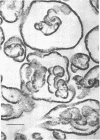Abstract
Treatment of a partially purified preparation of cell walls of Escherichia coli with Triton X-100 at 23 C resulted in a solubilization of 15 to 25% of the protein. Examination of the Triton-insoluble material by electron microscopy indicated that the characteristic morphology of the cell wall was not affected by the Triton extraction. Contaminating fragments of the cytoplasmic membrane were removed by Triton X-100, including the fragments of the cytoplasmic membrane which were normally observed attached to the cell wall. Treatment of a partially purified cytoplasmic membrane fraction with Triton X-100 resulted in the solubilization of 60 to 80% of the protein of this fraction. Comparison of the Triton-soluble and Triton-insoluble proteins from the cell wall and cytoplasmic membrane fractions by polyacrylamide gel electrophoresis after removal of the Triton by gel filtration in acidified dimethyl formamide indicated that the detergent specifically solubilized proteins of the cytoplasmic membrane. The proteins solubilized from the cell wall fraction were qualitatively identical to those solubilized from the cytoplasmic membrane fraction, but were present in different proportions, suggesting that the fragments of cytoplasmic membrane which are attached to the cell wall are different in composition from the remainder of the cytoplasmic membrane of the cell. Treatment of unfractionated envelope preparations with Triton X-100 resulted in the solubilization of 40% of the protein, and only proteins of the cytoplasmic membrane were solubilized. Extraction with Triton thus provides a rapid and specific means of separating the proteins of the cell wall and cytoplasmic membrane of E. coli.
Full text
PDF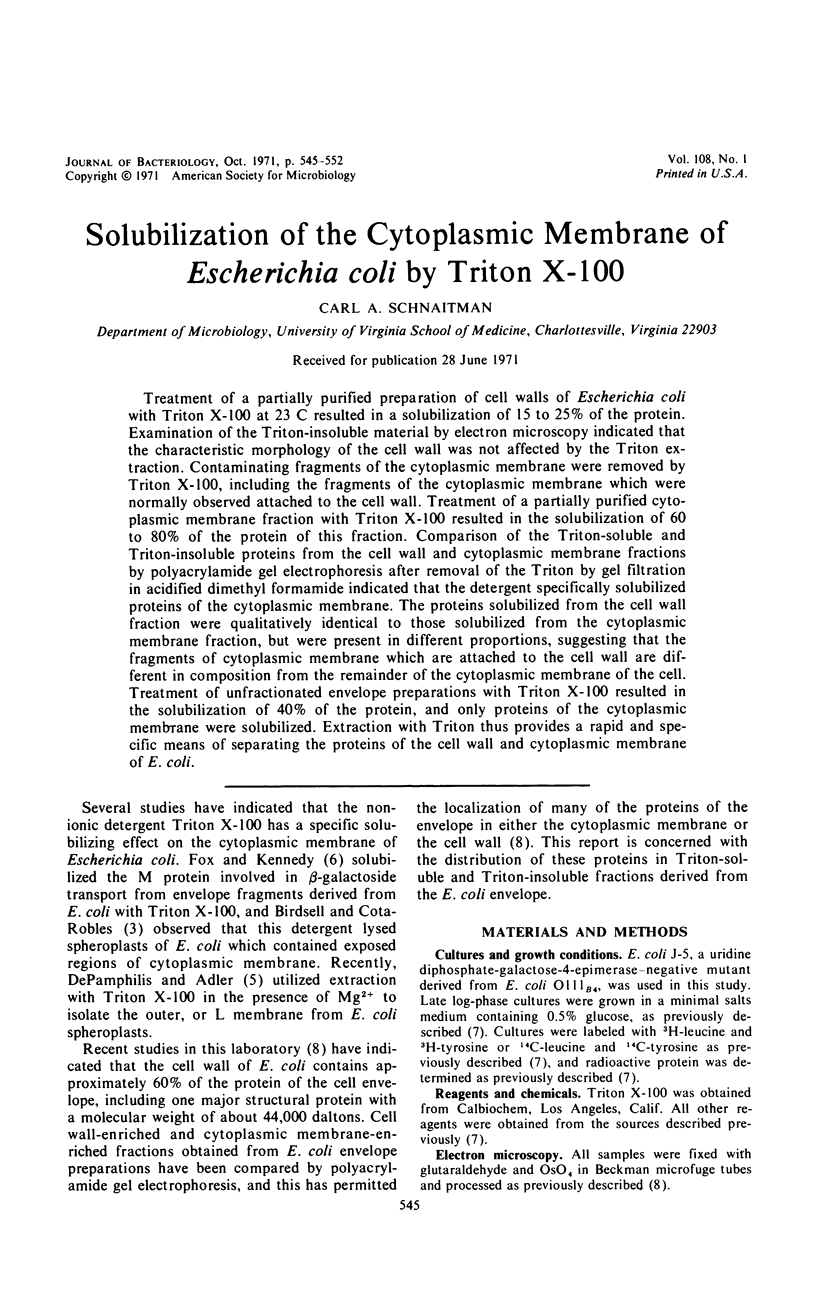
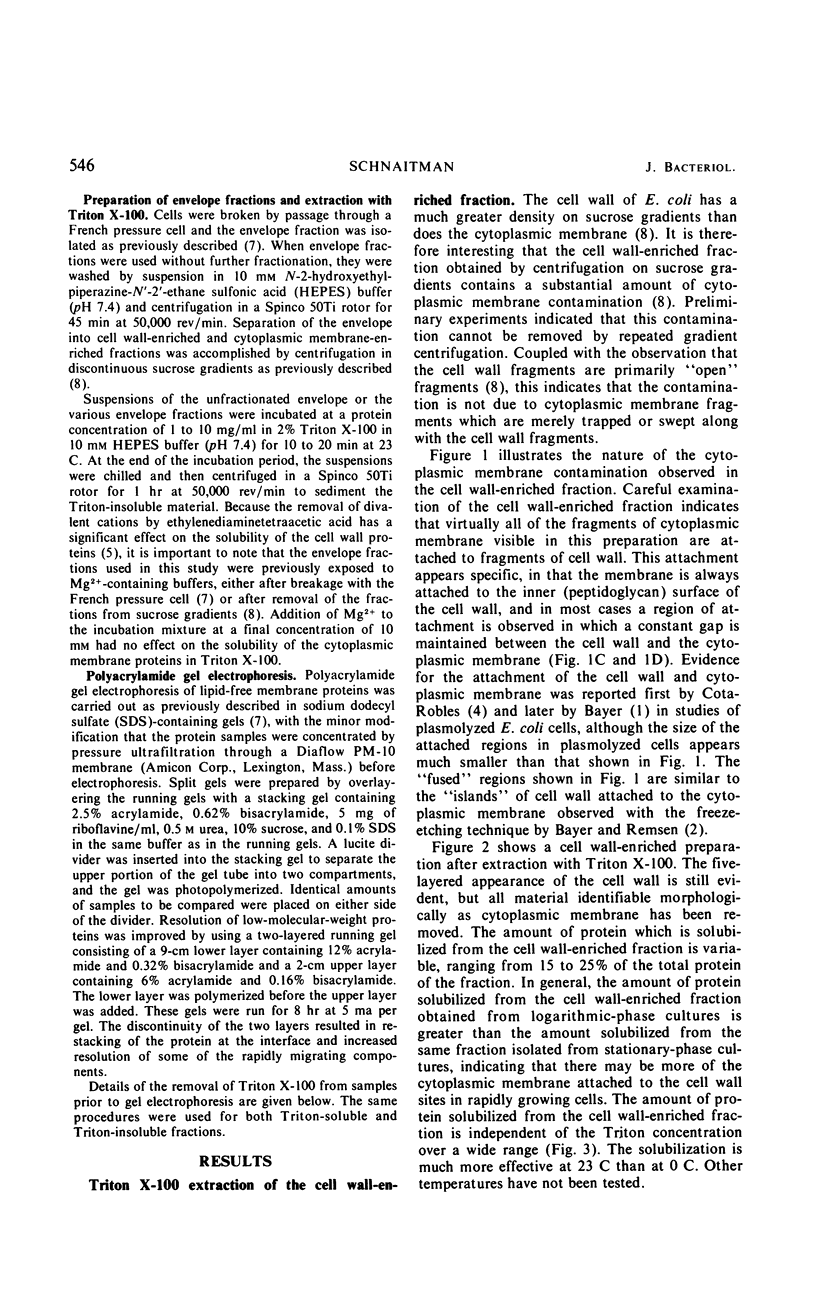
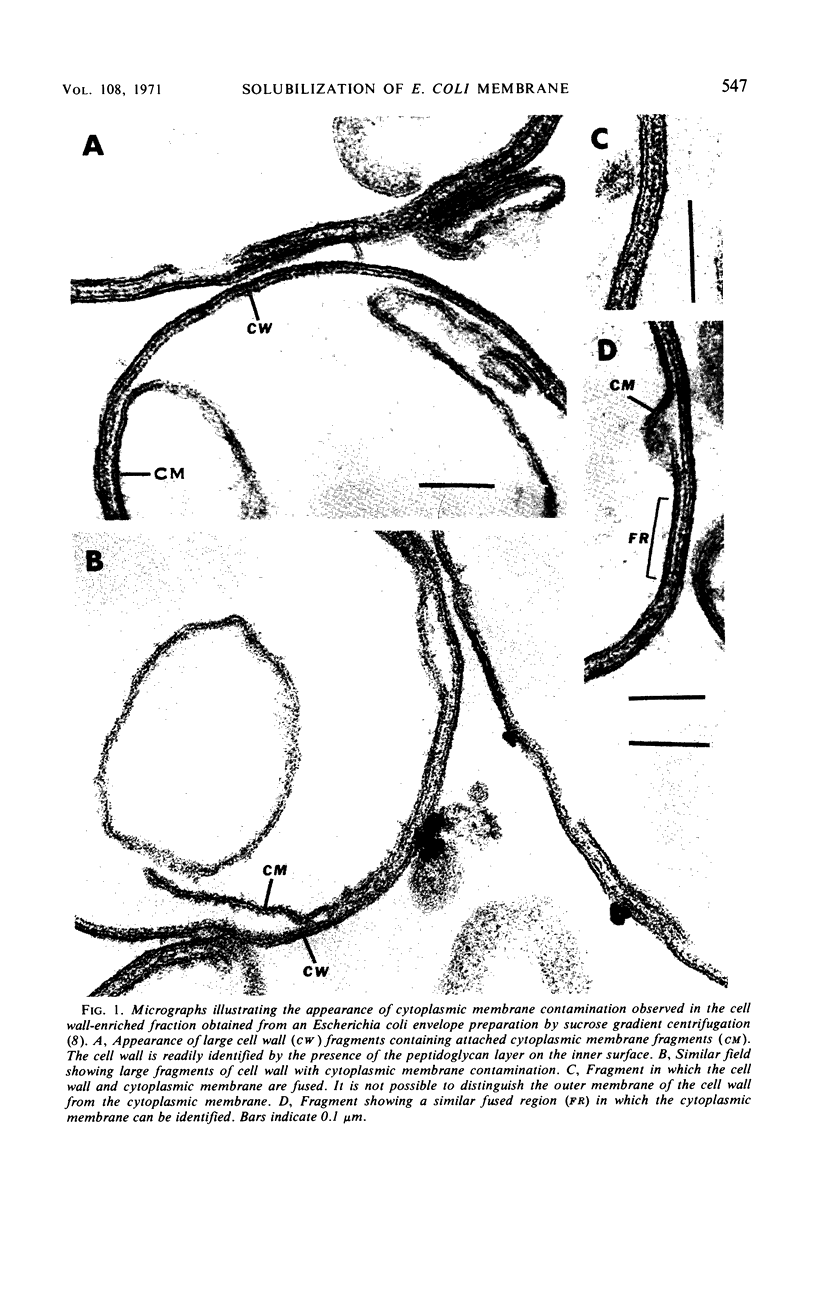
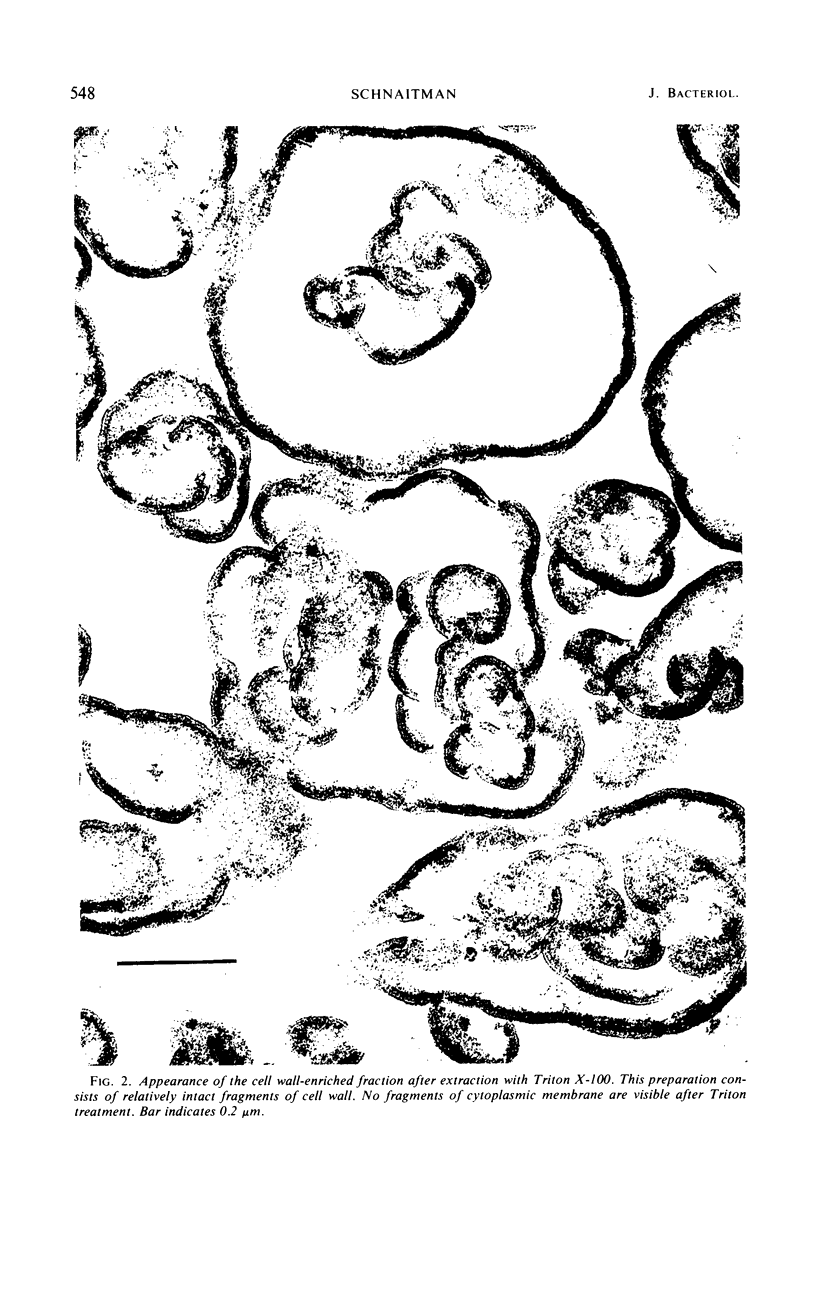
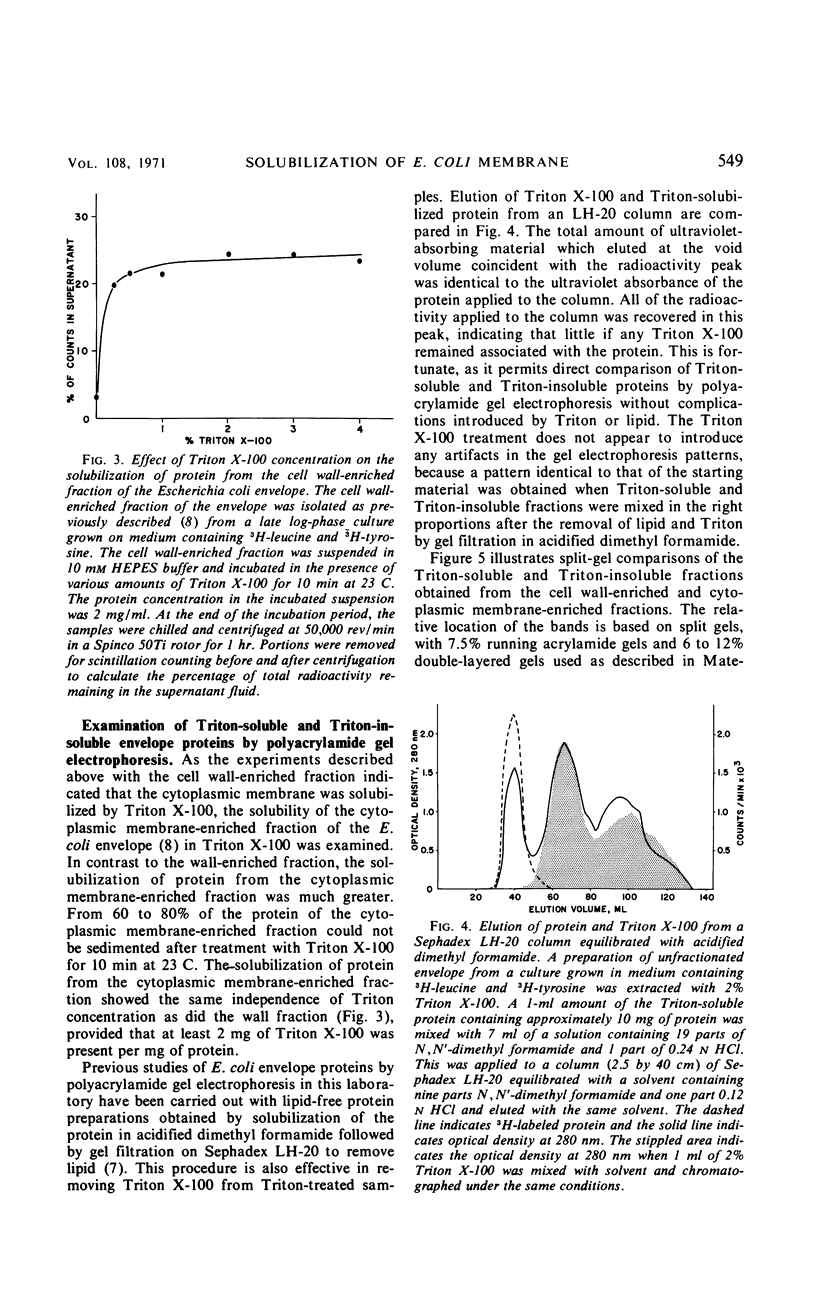
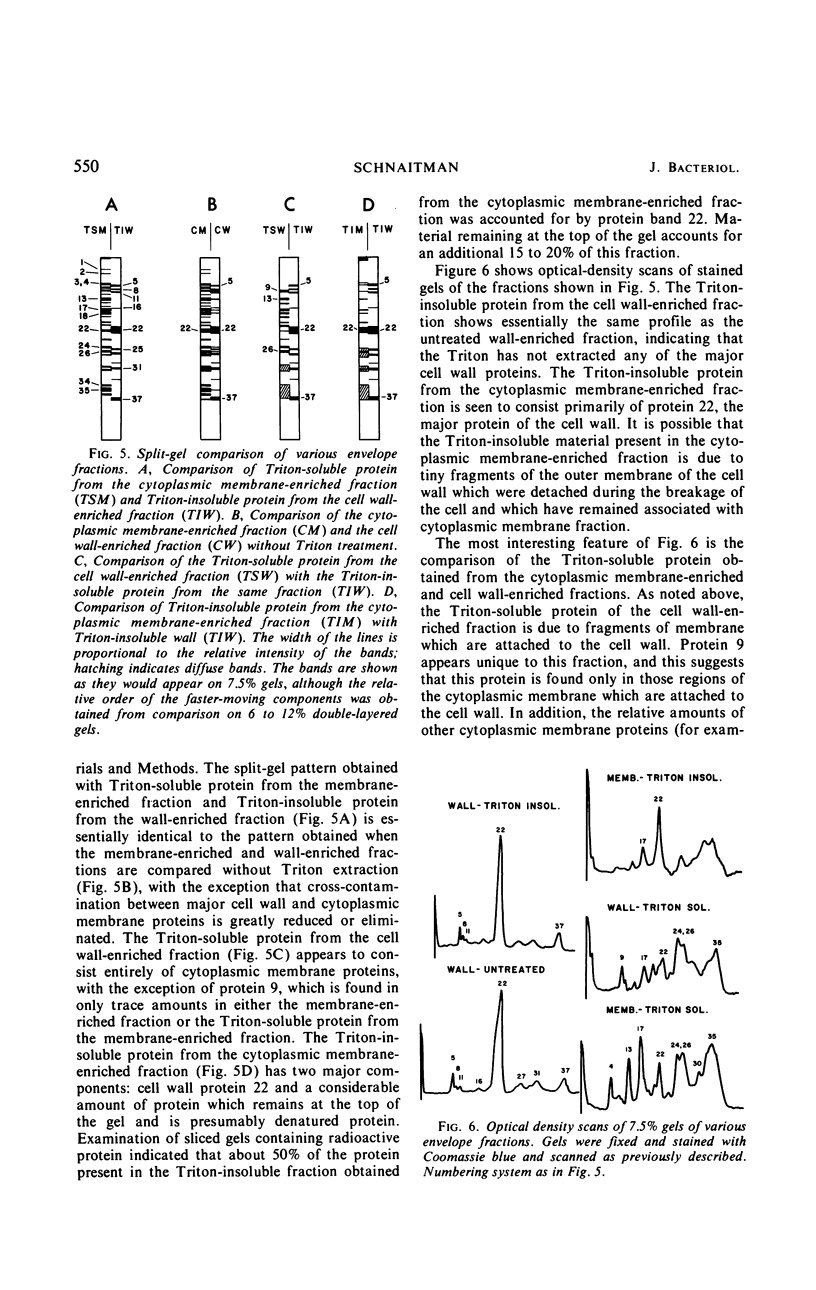
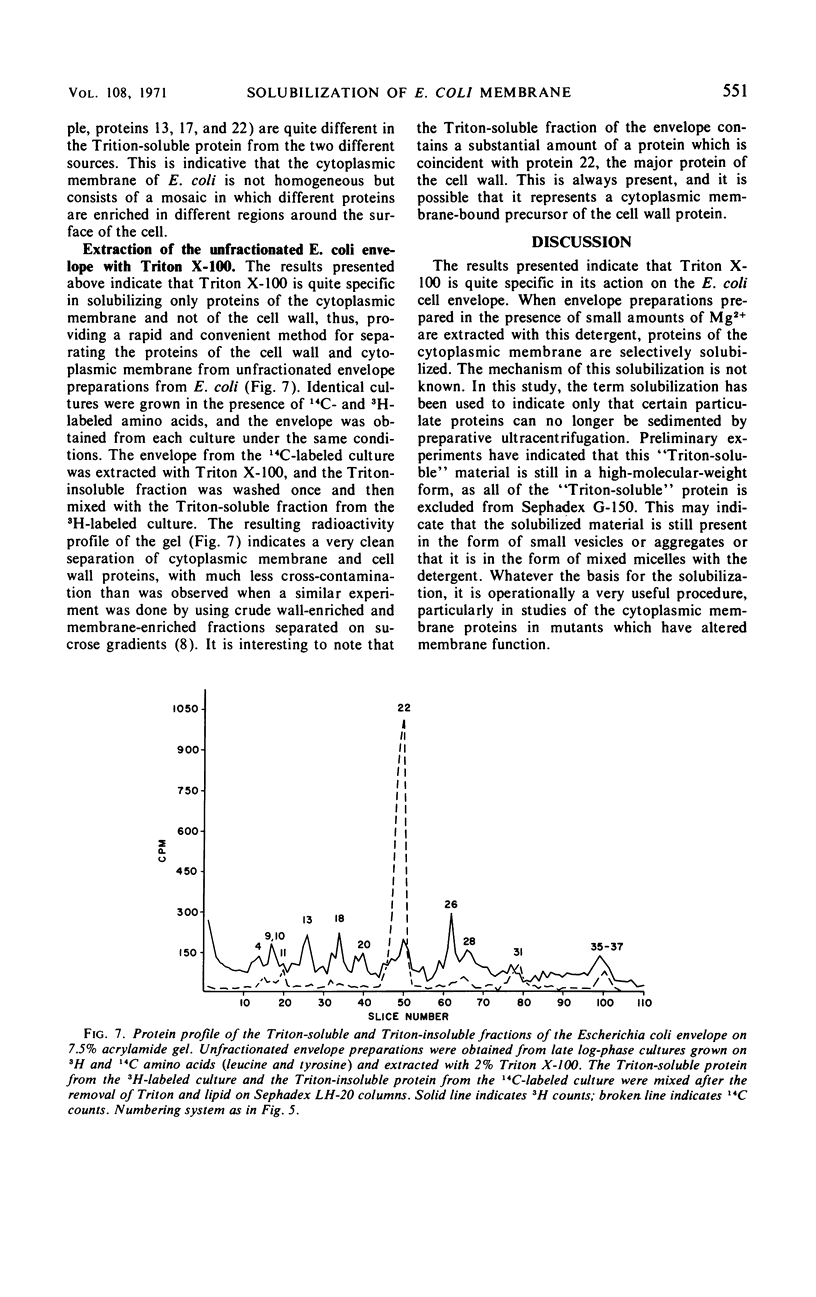
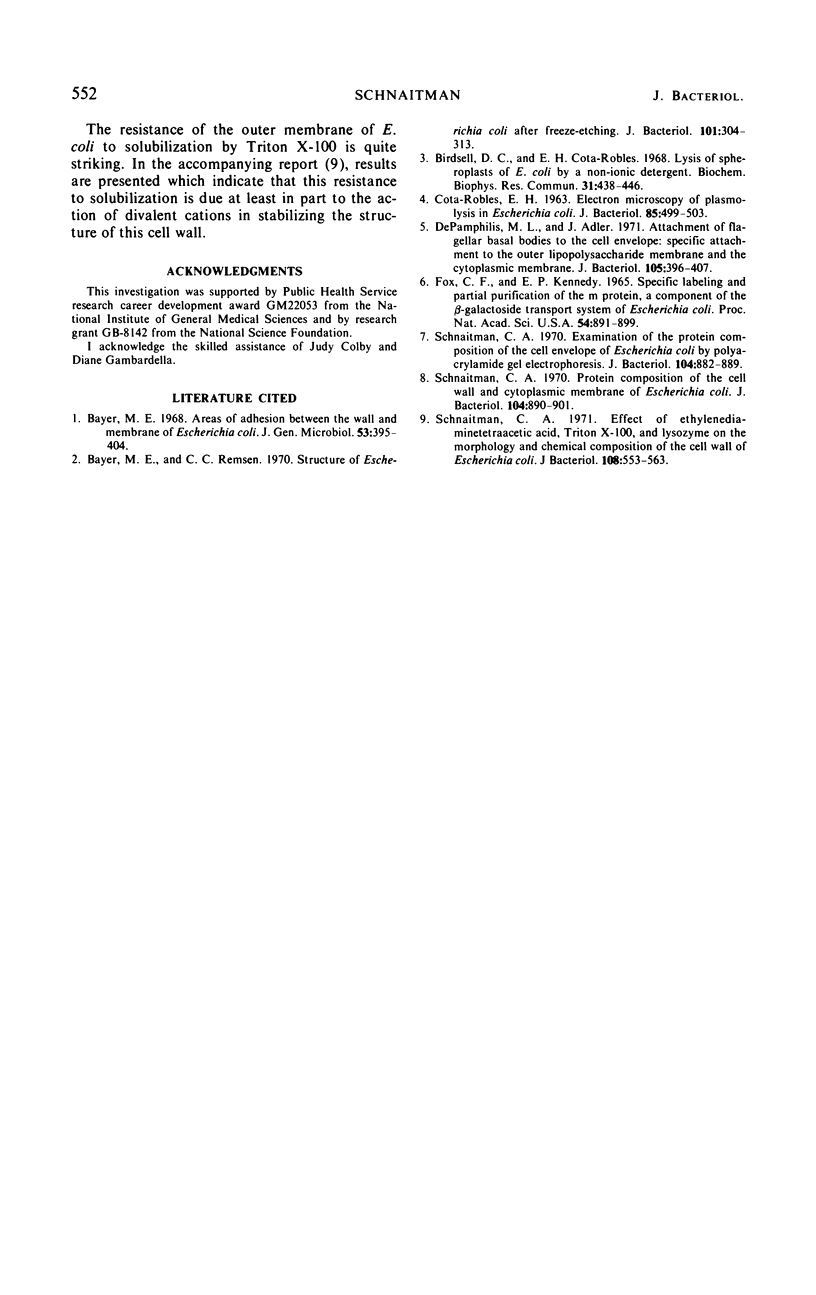
Images in this article
Selected References
These references are in PubMed. This may not be the complete list of references from this article.
- Bayer M. E. Areas of adhesion between wall and membrane of Escherichia coli. J Gen Microbiol. 1968 Oct;53(3):395–404. doi: 10.1099/00221287-53-3-395. [DOI] [PubMed] [Google Scholar]
- Bayer M. E., Remsen C. C. Structure of Escherichia coli after freeze-etching. J Bacteriol. 1970 Jan;101(1):304–313. doi: 10.1128/jb.101.1.304-313.1970. [DOI] [PMC free article] [PubMed] [Google Scholar]
- Birdsell D. C., Cota-Robles E. H. Lysis of spheroplasts of Escherichia coli by a non-ionic detergent. Biochem Biophys Res Commun. 1968 May 10;31(3):438–446. doi: 10.1016/0006-291x(68)90496-8. [DOI] [PubMed] [Google Scholar]
- COTA-ROBLES E. H. ELECTRON MICROSCOPY OF PLASMOLYSIS IN ESCHERICHIA COLI. J Bacteriol. 1963 Mar;85:499–503. doi: 10.1128/jb.85.3.499-503.1963. [DOI] [PMC free article] [PubMed] [Google Scholar]
- DePamphilis M. L., Adler J. Attachment of flagellar basal bodies to the cell envelope: specific attachment to the outer, lipopolysaccharide membrane and the cyoplasmic membrane. J Bacteriol. 1971 Jan;105(1):396–407. doi: 10.1128/jb.105.1.396-407.1971. [DOI] [PMC free article] [PubMed] [Google Scholar]
- Fox C. F., Kennedy E. P. Specific labeling and partial purification of the M protein, a component of the beta-galactoside transport system of Escherichia coli. Proc Natl Acad Sci U S A. 1965 Sep;54(3):891–899. doi: 10.1073/pnas.54.3.891. [DOI] [PMC free article] [PubMed] [Google Scholar]
- Schnaitman C. A. Effect of ethylenediaminetetraacetic acid, Triton X-100, and lysozyme on the morphology and chemical composition of isolate cell walls of Escherichia coli. J Bacteriol. 1971 Oct;108(1):553–563. doi: 10.1128/jb.108.1.553-563.1971. [DOI] [PMC free article] [PubMed] [Google Scholar]
- Schnaitman C. A. Examination of the protein composition of the cell envelope of Escherichia coli by polyacrylamide gel electrophoresis. J Bacteriol. 1970 Nov;104(2):882–889. doi: 10.1128/jb.104.2.882-889.1970. [DOI] [PMC free article] [PubMed] [Google Scholar]
- Schnaitman C. A. Protein composition of the cell wall and cytoplasmic membrane of Escherichia coli. J Bacteriol. 1970 Nov;104(2):890–901. doi: 10.1128/jb.104.2.890-901.1970. [DOI] [PMC free article] [PubMed] [Google Scholar]




